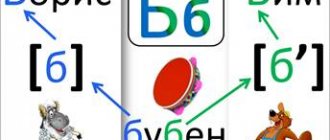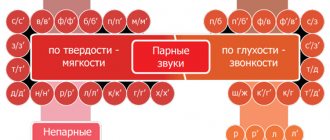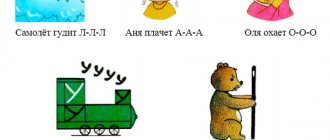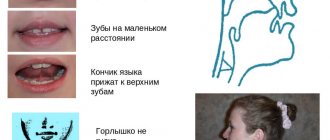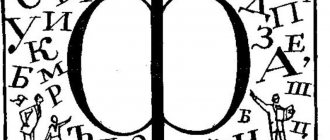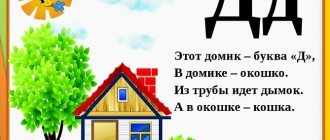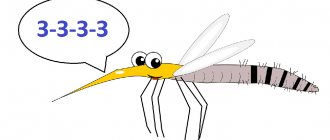Introducing the letter "B"
Each letter contains a little fairy tale. Here, for example, is the letter “b”. Now it is read as “be” and cannot be confused with anything. But before it was called “buki”. Where does the strange name come from?
It turns out that the name of the letter goes back to an older word - beech. Beech and beeches are words starting with the letter b for children that you definitely need to know. Writing tablets were made from a tree called beech. Since then, every time I pronounce the letter “b,” I remember the tree that served as the pages of the first books. The origins of language arise in memory.
Voiced and unvoiced sounds
Consonant sounds are also classified into voiced and voiceless. The former consist of voice and noise, while the latter consist only of noise.
The voiced category includes: [B], [G], [D], [F], [Z], [V], [Y], [L], [M], [N], [R].
The deaf group includes: [К], [П], [Х], [Ц], [Ч], [С], [Т], [Ф], [Ш], [Ш].
Most consonants can form pairs based on deafness and hardness:
[B]—[P] [V]—[F] [D]—[K] [D]—[T] [G]—[S] [W]—[W]
Voiceless and voiced consonants are easy to remember using two sentences:
- “The Lion and the Toad Have Many Friends” (Voiced)
- “Styopka, do you want a cheek? - Ugh!" (Deaf).
You can memorize them or print them out on a separate card.
Russian words ending with Дь
- behind
- Kad
- smooth surface
- luggage
- honeydew
- notebook
- horse
- bream
- square
- living space
- swan
- after all
- bear
- finish
- commandment
- sermon
- confession
- rebuke
- ice
- amber
- black ice
- copper
- gum
- food
- middle
- in the middle
- queue
- henceforth
- in the middle
- gray
- leader
- rain
- nail
- bunch
- milk mushroom
- podgruzd
- grid
- backwater
- lead
- bad weather
- triodion
- half-starved
- juveniles
- lord
- hedge
- amble
- walker
- firmament
- pole
- someday
- some day
- somewhere
- from somewhere
- somewhere
- someone's
- some
- anyone
- somehow
- for some reason
- for some reason
- for some time
- anyone
- anything
- for some reason
- acorn
- zhmud
- nope
- breast
- cephalothorax
- Chud
- herring
- not at all
- lo and behold
- peled
- servants
- minnow
- sterlet
- junk
- rabble
- span
- sloppy
- suddenly a row
- strand
- motley
Hard and soft consonants
How to teach a child to distinguish soft sounds from hard ones? We must start with the fact that softness and hardness are characteristics only for consonant sounds. The vowels here are in the chorus. Although hardness and softness are not typical for them, it is their close proximity in some words that can affect these properties of consonant sounds. The main difference between soft and hard sounds is the peculiarities of their pronunciation.
If a person pronounces soft consonant sounds, then the middle of his tongue rises to the palate and blocks the passage through which the air moves, and the tip moves slightly forward towards the teeth. This is additional articulation. The process itself is called palatalization.
Kids don’t need to know such complexities, but parents may find this term useful to broaden their horizons. This does not happen when pronouncing solid sounds.
To understand the difference yourself, it is enough to say a test word in which the same sound acts as a hard and soft sound.
Let's take "break" as an example. Pronunciation of the first consonant sound [p'] makes the tongue dance in the mouth and rise to the sky, but for the second consonant sound [p] these somersaults are not needed.
It’s easy for parents to understand the difference, but how can you explain it to a child? We suggest using your imagination and using interesting stories, cheat sheets and simple games that will help kids remember hard and soft consonant sounds.
Amazing letter
There is a letter b at the end of a word; an example for children is baobab. However, here the letter appears at the beginning. If you needed an example of a word with a b in the middle, baobab would come in handy. A huge tree, but our ancestors hardly had the honor of seeing it.
The tree is found mainly in hot African savannas. The absence of a tree in their native land did not prevent the Russian language from borrowing the word “baobab”. But there are other words that have come into modern speech, but have changed greatly.
Take, for example, the word Babylon, the name of one of the ancient civilizations. If you write the word “Babylon” in Russian, you will not see the printed letter b, large or small, and will not appear to the eye. Meanwhile, in English-language literature the word is written “Babilon” or “Babilo”. What's the matter? How could an entire letter be missing? It turns out that everything is very easy.
Recording sounds
In transcription, the softness of a consonant sound is indicated by adding the symbol ' to its notation. This is an apostrophe that appears in some loanwords.
For example, to indicate the softness of the sound P in transcription, you need to write [p']. The hardness of the sound is not indicated.
There's nothing complicated about it. Offer your child a simple task. He needs to write out from a group of words only those that contain soft consonants, and then transcribe them with an apostrophe. Just a few of these exercises, and he will quickly remember how softness is indicated.
Table of hard and soft sounds
All rules are collected in one table. At first glance, it may seem like gobbledygook to a child, but after accessible explanations and careful study, the new material will no longer seem so complicated.
Print and hang this picture in a visible place so that your child can learn these rules at any convenient time.
Always hard and soft sounds
Now it’s time to find out the names of those very rebels who did not want to surrender to the enemy without a fight. The sounds Ch, Shch and Y are always soft, but C, Zh, Sh can only be hard. These are six consonant sounds that are still waging their quiet war and do not want to submit to the power of vowels. It doesn't matter who they happen to be next door to. The steadfastness of these sounds is admirable.
